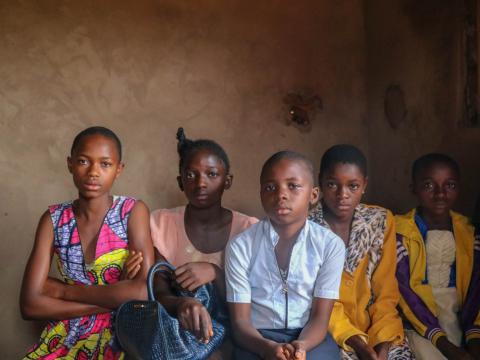Top 5 things to know about the violence in the Kasai region

By: Kate Shaw
World VIsion Communications Consultant, Kasai Response
1. Violence in the Kasai region escalated from 2016 to 2017
It was due to a local dispute between a chief and the national government. In Kasai Central, Jean-Prince Mpandi inherited the Kamuina Nsapu chieftancy in 2012 but the government saw him as someone who was aligned with the opposition and refused to recognize him. Mpandi, in turn, began to act out against any symbols of government power in his area.
Tensions escalated and by August 12, 2016, Mpandi was killed. The conflict spread rapidly and his followers recruited thousands of people into the militia. Counter militias were also created, which began attacking people on an ethnic basis.
2. Peace has mostly returned to the Kasai region now, but violence still lingers
UN peacekeepers’ presence began to increase from December 2016, but the violence continued to escalate through early 2017, including the death of two UN investigators. By summer 2017 things had mostly stabilised, and aid agencies, including World Vision, arrived in the region.
Today the militias are formally disbanded, but ethnic tensions and political disputes continue to cause isolated bouts of violence. Children have told us they hear rumours of the militias starting again and they’re scared. Even if the current peace holds, the experiences and distress caused by the conflict will continue to be felt for many years.
3. The unstable peace is compounded by immense needs
The Kasai region had some of the poorest and least developed provinces in the DRC before the conflict, and schools, health centres, and homes were frequently attacked and damaged during it.
The response to the crisis is deeply underfunded. World Vision has reached almost 500,000 people in the Kasai region through food distributions, psychosocial support, education, water and hygiene programming but many more remain in desperate need of humanitarian aid.
The UN estimates that psychosocial needs, education and nutrition are especially ill funded. For example, out of 859,000 children and their families in need of psychosocial support and protection in the region. OCHA estimates that only 8 per cent have received the help they need.
4. The food situation is grim
Malnutrition has increased 750 per cent in the region since the beginning of the crisis – because families spent two, almost three growing seasons on the run during the conflict, stocks are completely depleted, and some even began eating seeds. Since last autumn families have begun planting again, but are struggling to grow enough to eat. UNICEF estimates 400,000 children are suffering from severe acute malnutrition and in danger of dying if they don’t receive the help they need.
5. Children are bearing the brunt, yet again
Almost all (99 per cent) of the children we spoke to for our report Will You Hear Us? 100 children in DRC tell their story, have been displaced because of conflict in the Kasai region. In many cases, children have been forced to flee several times.
Many children were pressured or forced to join the militias –UNICEF estimates 60 per cent of militia members were under the age of 18 and some as young as five.
Some children ran away from the militia when they could, others left battlefields wounded, and some stayed until the militias were disbanded. However, whatever their personal experiences in the militias, it is so important for these children to now be reaccepted into their communities and find a way to move forward with their lives.
Many children yearn to go to school and create a better future for themselves, but parents don’t have the $1.50 per month to pay their school fees. For many families who are struggling to eat, that seems like an impossible sum.